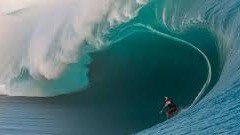One of the hardest things in early-stage investing is learning to tell the difference between a trend and a wave.
Trends are exciting. They move fast, get headlines, and spark FOMO. But they often fade just as quickly as they arrived.
Waves, on the other hand, are slower to build—but they change industries. They create durable value. And if you catch the right one early, it can take you far.
The analogy I always come back to: Trends are like ripples on the surface—quick to appear, quick to fade. Waves run deeper. They take time to build, but when they do, they carry force. If you’re positioned right, they can take you somewhere truly meaningful.
We’ve all seen it:
Waves:
Cloud infrastructure in the early 2010s
The shift to mobile post-iPhone
Vertical SaaS gaining traction in legacy industries
Enterprise AI actually getting integrated into operations and workflows
Trends:
Clubhouse
The Web3 tokenization of everything moment
Groupon-style daily deal clones
“AI” slapped on slide 3 of a deck with no real use case
At Laconia, we’ve learned to pause and ask a few key questions:
Is this a feature or a company?
Is this solving a real pain point, or just riding a headline?
Who’s the actual customer, and are they pulling for this—or is the founder pushing it?
Waves usually don’t come with buzzy packaging. They show up quietly—in behavior shifts, infrastructure development, regulatory tailwinds, or workflow changes. But once they start moving, they open up space to build something meaningful.
Founders: ask yourself—is what you’re building going to matter in five years, or just five minutes?
Chasing trends might get you early attention, but building on a wave gives you staying power. The companies that grow, compound, and reshape industries? They're built on waves.

